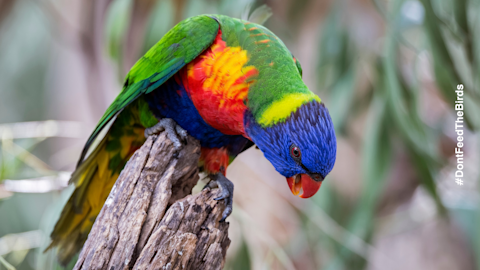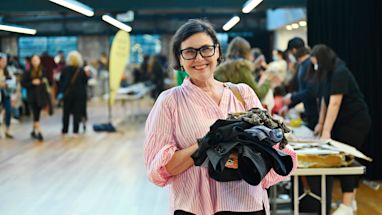How cool are rainbow lorikeets?
You can find them all around our local area, in trees and on balconies.
What do lorikeets eat?
Lorikeets are fairly unique in the parrot world in that they are primarily nectivorous – feeding on nectar, pollen and flowers and sometimes soft fruits.
They use their brush-like tip of their tongue to effectively capture nectar and pollen. They will eat seeds and other hard foods, but too much will hurt the soft bristles on their tongues.

Can I feed lorikeets?
Nope.
You shouldn't feed commercial parrot seed mix to lorikeets as it’s not good for their digestive system.
Bread is also a no-go since it has no nutritional value for birds and can cause malnutrition as they get full and don’t eat anything else. Uneaten bread also spoils and attracts rats.
What can I do to help lorikeets?
There are 2 ways you can help these colourful critters.
- Plant native flowering plants in the garden, such as grevillea, bottlebrush, banksia and lily pilli. This means they’ll have plenty of food available.
- Get involved in the Australian Backyard Bird Count or Citizen Science projects about lorikeets in our local area.
What do you call a group of lorikeets?
A collective noun is any noun that is used to name a group of something.
Unlike ducks or cockatoos there is no official collective noun, but our urban ecology team use the term flock.
This article is part of a monthly series about our feathered friends. Each month, our Urban Ecology team will share fun facts about birds in our local area and how we can keep them happy and healthy.




